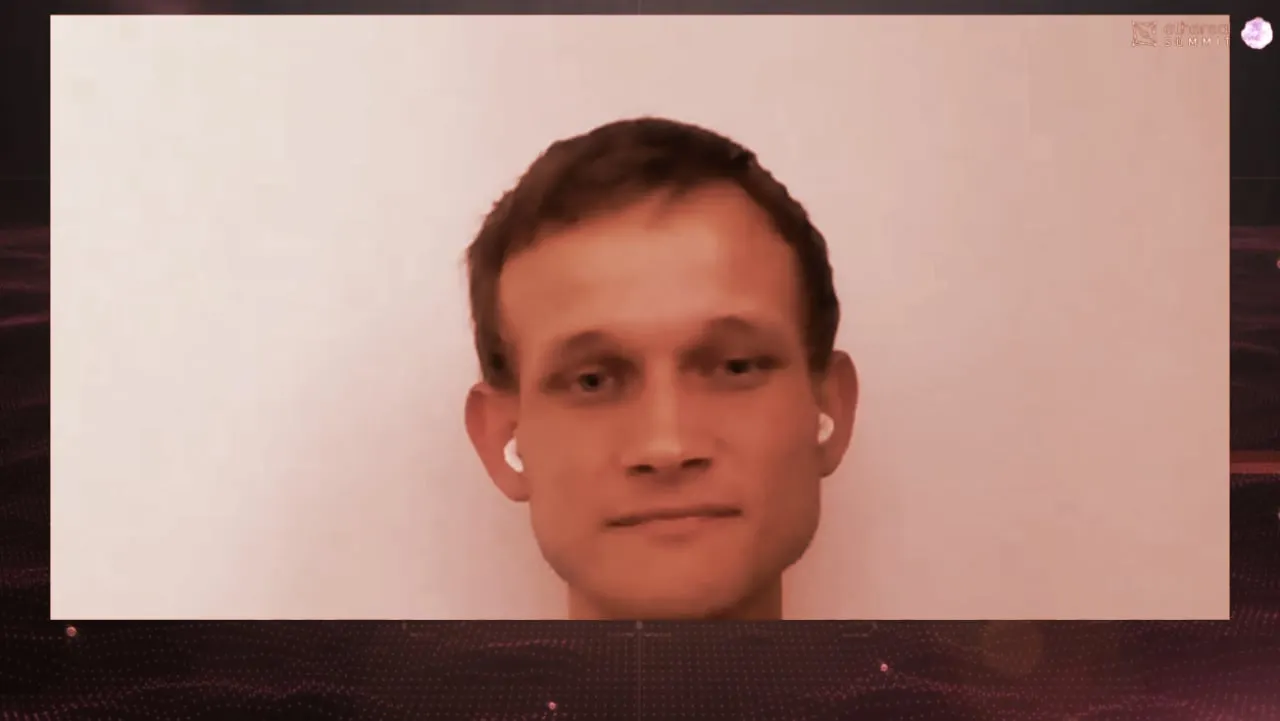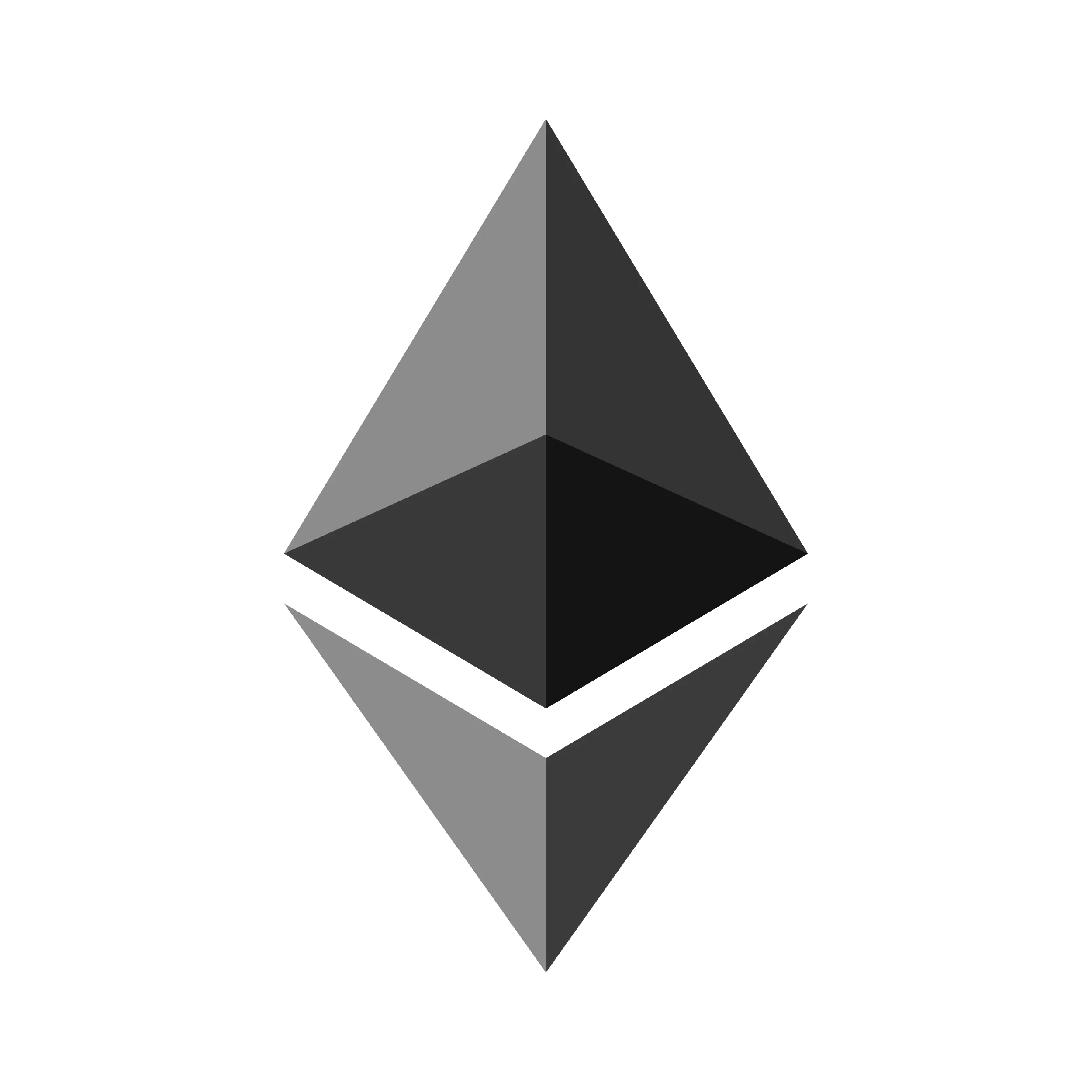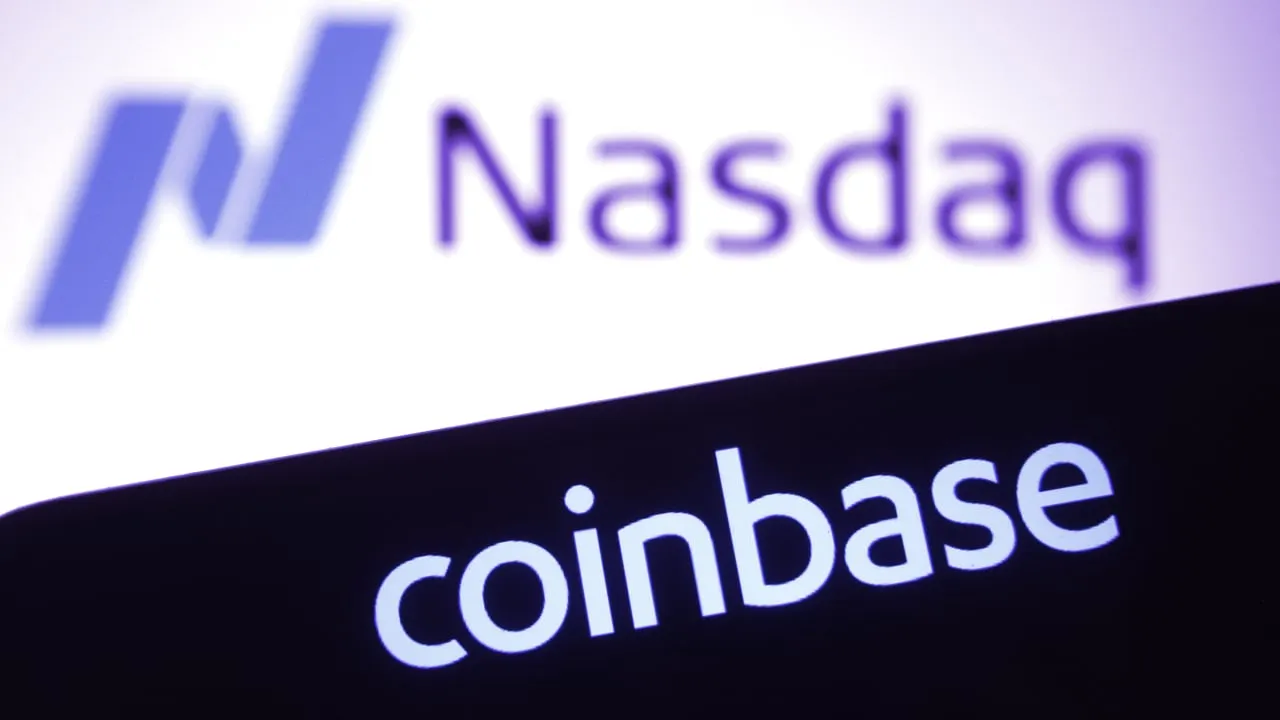In brief
- Ethereum co-founder Vitalik Buterin offered his views on NFTs, future ways of working, and Ethereum's ongoing upgrade at the 2021 Ethereal Summit.
- He said that NFTs, for all their speculative appeal, also offered creators a business model for the first time.
Ethereum co-founder Vitalik Buterin took to the (virtual) stage at Decrypt's Ethereal Summit to champion the new business models and ways of organizing that are being pioneered atop the blockchain-powered "world computer".
"There's all these experiments around decentralized organizations, decentralized governance, proof of humanity type things, proof of participation," said Buterin, in conversation with journalist and author Camila Russo. "Just different ideas for how people can organize and work together over the Internet that are being developed on Ethereum. And it would just be great to see more of those actually break out and turn into something that just really helps people work together better on a large scale."
Decentralized organizations, or DAOsDAOs, exist as a set of smart contractssmart contracts on the Ethereum blockchain, enabling groups of people to organize in a non-hierarchical structure. In recent months they've shot to prominence, with the state of Wyoming passing a bill to grant them legal status.
"People have talked about the DeFi space and NFTs as something that's really managed to break out into the mainstream."
Buterin also pointed to the role of decentralized finance (DeFi) and non-fungible tokens (NFTs) in accelerating adoption of Ethereum. "People have talked about the DeFi space a lot, and NFTs as just something that's really managed to break out into the mainstream and get a lot of people interested," he said.
NFTs are cryptographically unique tokens that can be linked to digital content such as images and music. In recent months they've exploded in popularity, with brands and celebrities launching their own NFTs, while multi-million dollar digital art sales have grabbed headlines.
FUN FACT : This Quadratic funding NFT by @VitalikButerin was sold for 77.35 ETH (valued ~$18500 at the time) in July 2020. pic.twitter.com/Zt7pPS5CzG
— Documenting Ethereum 🧾 (@DocumentEther) March 28, 2021
While Buterin conceded that there's a "speculative aspect" to NFTs, he was excited about their potential to "allow groups of people who before had no business model at all, to finally have a business model of some kind for the first time." That could include creators, artists and even charities, he added. "Things like that can be used as a way to make some interactions happen that just could not happen before," he said. "That's already a great outcome."
The road to Ethereum 2.0
Top of Buterin's list of priorities, however, is overseeing the transition to Ethereum 2.0, the long-awaited upgrade that will see Ethereum transition from an energy-hungry proof-of-work consensus mechanism to the more environmentally friendly proof of stake model.
The 27-year-old, who invented Ethereum when he was just 19, said that compromises have been necessary to achieve a smooth transition to the new network, which promises to improve Ethereum’s transaction speeds and security and drive the applications that will usher in a billion new users.
“The roadmap has evolved to become more pragmatic over time in a lot of ways, as the merger becomes closer,” said Buterin.
The conclusion of the long-awaited upgrade is penciled in for the end of this year—by “optimistic estimates,” according to Buterin.
Instead of two blockchains with assets from one having to be painstakingly transferred to the other (as originally envisaged in 2018), the network upgrade has been designed to cause users and developers the minimum of disruption, and promises vastly improved scalability through sharding and “other lovely things,” said Buterin.
Out with the old and in with the new
Perhaps the biggest compromise is that the new proof-of-stake chain will not hold the transaction history of the old proof-of-work chain, which is being renamed the “execution chain.” Meanwhile, the Beacon chain, which introduces proof-of-stake to the Ethereum network, is being renamed the consensus chain.
“After the merge, the execution chain is going to live inside of the consensus chain,” explained Buterin. “Every beacon chain block will contain one execution chain block. So you'll literally have a chain inside a chain,” he added.
This design was decided on in order to “make the merge process as simple as possible and as smooth as possible for users, for clients, developers and for contracts and applications developers,” said Buterin. “There's a lot of complicated technical wizardry happening in the background, but from the point of view as a user, you don’t have to worry about that as much,” he added.
Why sharding is great: demystifying the technical propertieshttps://t.co/E03JJEQNR6
— vitalik.eth (@VitalikButerin) April 7, 2021
The entire transaction history of the blockchain will still be in this proof of work chain. But, eventually, Ethereum clients will delete the old code, which will no longer be compatible with the new version. “And people are going to have to either use old nodes or create special-purpose protocols to handle really old data,” he explained.
Tools such as The Graph, which can efficiently locate old data, are already available, he noted, and new ones are being developed.
Will Ethereum still be immutable?
The decision not to include the old data was a necessary trade-off. “We definitely do not want Ethereum nodes to just continue becoming more unwieldy and more complex to build and run over time,” said Buterin.
"We definitely do not want Ethereum nodes to just continue becoming more unwieldy."
Drilling a little deeper into the upcoming changes, interviewer Camila Russo asked him how they would affect Ethereum’s immutability.
“I don’t think it would compromise immutability because the hash chain is still there,” and so it can still be checked, said Buterin, referring to the original blockchain. But he recognized that this may not be the same view held by those who champion Bitcoin, for instance.
“There is, I think, a real cultural difference in expectations,” he said. “[Bitcoiners] really value this idea that, with a present-day Bitcoin node, you can just go and validate every single thing that happened from day one.” With Ethereum, that’s not really the case; a future researcher would have to use an older client to check the older part of the chain. He added that this difference between the community’s relationship with the blockchain was not the only thing that set the Bitcoin and Ethereum communities apart.
Ethereum targets a billion new users
Aya Miyaguchi, executive director of the Ethereum Foundation, which administers the network, was also on the panel with Buterin. She discussed initiatives underway to onboard Ethereum’s next billion users, including a collaboration with UNICEF.
The joint initiative aims to connect people to the Internet, and is initially focused initially on schools.
She also said that African governments were interested in participating in staking on the network as a way to achieve more financial independence.
In the near term, the foundation is working to collaborate in more academic areas, expanding into economics and social science, as well as providing more funding for under-resourced applications using the network.
With Ethereum’s cryptocurrency, ETH, seeing its price surge by almost 25% in the past week to a new all-time high of $3,500, there couldn't be a better backdrop for Buterin and Miyaguchi’s plans.





